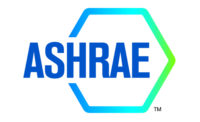ASHRAE announced that
energy-savings measures related to VAV and cooling towers are being proposed
for ANSI/ASHRAE/IESNA Standard 90.1, Energy Standard for Buildings Except
Low-Rise Residential Buildings, which provides minimum requirements for the
energy-efficient design of buildings except low-rise residential buildings.
Fourteen proposed addenda to the
standard currently are open for public comment.
Under proposed addendum l, closed
circuit cooling tower requirements to help reduce energy consumption would be
added to the standard. The addendum would add minimum efficiency and
certification requirements for both axial and centrifugal fan closed circuit
cooling towers, also known as fluid coolers.
“These requirements will provide
consulting engineers, system designers and contractors with guidelines for the
selection of independently certified, energy-efficient closed circuit cooling
towers,” Mick Schwedler, chair of the 90.1 committee, said. “This change also
will complement existing minimum and certification requirements for open
circuit cooling towers, helping prevent confusion between the requirements for
open vs. closed.”
Also open for public comment is
addendum n, which extends fan requirements for large single-zone units. VAV fan
control currently is required in the standard for multiple-zone systems.
Extending VAV control to single-zone units would save energy by reducing fan
energy consumption when space cooling loads are reduced, he said.
The change would take effect in
2012, allowing air conditioning unit manufacturers time to redesign and test
their units. Manufacturers are currently redesigning to meet the 2010 phase-out
of certain refrigerants
“Utility rebate programs and other
incentives should encourage wider demand for these units and help this
requirement to see real savings before 2012,” he said. In addition, addendum r,
which would change informative Appendix G’s performance rating method into a
normative appendix, is open for comment. Making the performance rating method
normative, or required, would allow its adoption into advanced energy standards,
such as proposed Standard 189P, Standard for the Design of High-Performance
Green Buildings Except Low-Rise Residential Buildings, being developed by
ASHRAE in conjunction with the Illuminating Engineering Society of North
America and the U.S. Green Building Council. Additionally, language has been
changed to make Appendix G enforceable allowing adoption by model codes.
Requirements for systems that use
optional demand-controlled ventilation strategies are being proposed for
ASHRAE’s ventilation standard.
ANSI/ASHRAE Standard 62.1-2007,
Ventilation for Acceptable Indoor Air Quality, sets minimum ventilation rates
and other requirements for commercial and institutional buildings.
Seven proposed addenda to the
standard currently were open for public comment until late October 2007.
Currently, the dynamic reset
section of the standard allows designers to use optional controls to reset
outdoor air intake flow and/or zone minimum airflow as conditions within the
system change. For instance, it would allow a ventilation-system control
approach that alters outdoor air intake flow based on time-of-day, if
variations in zone population follow a predictable schedule, according to
Dennis Stanke, committee chair.
Proposed
addendum 62g provides more specific requirements for such optional system
controls, especially those historically called “demand controlled ventilation”
(DCV) and based on the use of CO2 levels, as they relate to outdoor airflow rates.
For example, the addendum would
require that optional DCV controls provide no less than the “area outdoor air
rate” listed in Table 6-1, and that such controls maintain the minimum outdoor
air intake flow no lower than the exhaust airflow rate required by Section
6.2.8, Stanke said.
“After public review and approval, this change should
clarify DCV requirements,” he said.
Also open for public comment is proposed addendum 62.1c,
which would add performance-based air cleaning requirements to section 6 of the
standard. This would allow designers in jurisdictions outside of the United
States to more readily determine when air cleaning is required. If approved,
this addendum also would add air cleaning requirements for systems in
non-attainment areas for particulate matter with diameter 2.5 microns
(PM2.5)and smaller. Such systems would need to use intake air filters with
minimum efficiency reporting value (MERV) 11.
“Through better filtration, this would improve indoor air
quality in many metropolitan areas of the United States,” Stanke said.
Also open for public comment is
addendum 62.1i, which replaces
mandatory language requiring that outdoor air rates for environmental tobacco
smoke (ETS) areas be determined using engineered methods with language
indicating that increased outdoor air rates address odor and comfort for ETS
areas, but not health. It also expands and clarifies a note to inform designers
that increased outdoor airflow has not been shown to reduce health effects
associated with ETS.
Be in the forefront of the mechanical engineering industry!
Join thousands of professionals today. Shouldn’t you know what they know?
JOIN NOW!Copyright ©2024. All Rights Reserved BNP Media.
Design, CMS, Hosting & Web Development :: ePublishing


